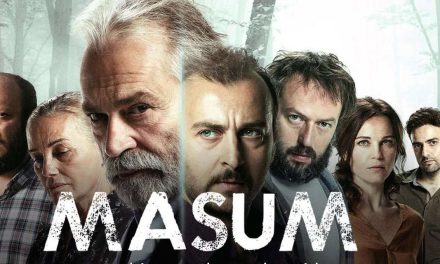British television series par excellence Doctor Who (1963-present) has been the subject of a wide variety of academic works. Rather than focusing on the televised series, however, in this week’s blog I want to discuss the audio-only Whovian tie-ins created by Big Finish, a private company, as opposed to public service broadcaster like the BBC who have produced the majority of the series, including the episodes discussed within this blog. In particular I want to focus upon their two volume Lone Centurion series from 2021 which follows the exploits of the Eleventh Doctor Companion and ‘Last Centurion,’[1] Nurse Rory Williams (Arthur Darvill) as he guards the Pandorica, a box-shaped prison in which his fiancée and fellow Companion Amy Pond (Karen Gillan) is trapped.
For those unfamiliar with this plotline, during the Eleventh Doctor’s (Matt Smith) first series various of his enemies work together to try and trap him in the Pandorica, though Amy is placed in there instead in order to save her life as she was mortally wounded by the previously-erased-from-existence Rory,[2] now reconstructed by the alien Autons as a Roman centurion made of plastic (it’s complicated), who is unable to resist the Autons’ order to shoot her. After this, Rory dedicates himself to protecting Amy/the Pandorica until the twentieth century as, being plastic, he is unable to age or to die from anything other than fire. This clear connection between history and constructed-ness, coupled with the overarching theme of the series being the Doctor as a story or faerie tale, can be read as reinforcing the fact that history is a construction based upon interpretation (or manipulation) of extant facts rather than as an expression of an objective ‘truth.’ This aligns with Edgerton (2020) who argues that accuracy of representations of the past are far less relevant than reasons for particular constructions occurring at particular points in time.
The Big Finish audios, however, fill in Rory’s experiences as a plastic centurion living through an alternate history. The first volume, Rome, follows him as he travels to Rome in the initial guise of a gladiator as he tries to find the Pandorica which has been taken to the city. While there, he is pressed into service by the Augusta (later Imperatrix) and eventually becomes Emperor for a brief period of time. Having realised that he is destabilising Rome and causing more problems than he can solve, he leaves by convincing the Romans that he is a god, elevating his friend Anna from slavery to high priestess and going back to Britain. The second volume, Camelot, follows his exploits as first a nurse then a knight in Arthur’s court who earns the ire of Merlin,[3] the affections of Lancelot and only narrowly escapes being named king.
Other than the difference in format (i.e., audio-only and Doctorless) the main differences between the audios and the televised series are in how history is positioned and used. The two volumes also use history slightly differently to each other which is also relevant to this argument to which I shall return. Both are broadly comedic (Rome more so than Camelot), but Rome plays into stereotypes such as the ‘weird foods’ and the power-mad, murderous Augusta killing her husband (a common trope in Latin literature and history). It is not really until he becomes the emperor that the volume engages in any real critique – up to that point it is closer to Higson’s (2012) uncritical pastiche than Steiner’s (2018) alternate history which encourages questioning of accepted narratives. The main point of critique in both volumes relates to class and forms of government. In both Rory is a proponent of democracy and of equality; in the third episode of the volume he tells his antagonist General Marius that ‘People aren’t expendable just because they’re poor or not Roman citizens…’. This, coupled with Rory’s dual positioning as ‘antique Roman’ and contemporary British/Englishman, means that British classism is being critiqued through the use of Classics, the allusion par excellence of the British elite.[4] Rory’s cluelessness about history leads him to destabilise the Roman system by trying to in essence modernise it; one can perhaps read that as critiquing British foreign policy and/or colonialism in that both Rory and Britain enter a culture out of self-interest that they know little about, destabilise it from ignorance, try and fail to repair it and ultimately leave. But history itself is not critiqued very much. Rory momentarily wonders if he and the Augusta who ruled briefly before him were simply edited out of Roman history – reminding the audience that such things can occur – but the musing is a means to an end as it reminds the listener that the audios take place in an alternate universe rather than inviting critique.
It is the second volume, Camelot, which allows a much more nuanced use and critique. This is no doubt because the series is engaging with Arthurian legend rather than (alternate-)historical fact, but it is telling that when we first meet Lancelot, he is explicitly trying to devise a way to make his wound, from being stabbed in the back, into something which sounds more impressive. The second episode is also explicitly positioned as a story rather than history. Rory critiques the surveillance state and the assignment of blame onto a usual scapegoat (here Morgana LeFay, who does not appear) in the first episode, clearly connecting the loss of civil liberties and scapegoating to British leadership (Merlin) and encouraging its critique. But it is Lancelot which not only questions history or legend but who explicitly queers it, though Guinevere ultimately becoming ‘king’ by popular vote also can be read that way. The relationship between Rory and Lancelot can be understood as paralleling that between the Doctor and Captain Jack Harkness (John Barrowman), though the Doctor was more than aware that Jack was attracted to him while it is far more ambiguous whether or not Rory recognises that Lancelot is homosexual rather than homosocial. Because Lancelot is paralleled with Anna, Rory’s friend from Rome who he does mention finding attractive (in the context of resisting it to remain faithful to Amy), it can also be read that Rory reciprocates Lancelot’s attraction. Though Rory characterises the relationship as friendship when he says goodbye to Lancelot at the end of Camelot, that does not preclude a suppressed attraction. Thus, in addition to queering history or legend, this suggests a queering of Rory himself. Because of the perceived connections between Camelot and British identity, all of this can also potentially be read as inviting the listener to question as Steiner (2018) suggests alternate histories do.
The Big Finish audios function as paratexts to the televised series but, as Gray (2010) notes, paratexts are often texts in their own right and are relational. So, in this case, rather than following the Doctor through a jumbled-up morass of space and time, these audios follow Rory, an explicit Doctor-analogue, as he slowly moves forward in time and only narrowly through space from the UK to Rome and back again. While this can function to connect British and Roman cultures through the analogy of the British/English-associated Doctor and the Roman Rory, it also functions to deepen and expand some of the mild, nascent critique seen in the televised series into a mild encouragement to question both the present and the (re)construction and (re)presentation of the past Through allowing the (smaller/niche/adult) audio-consuming audience to spend time specifically with Rory as the lead, the audios help develop his character. While it is hardly unusual for a transmedia series to leave textual space to be filled in by tie-ins in order to generate more revenue – Big Finish licence the characters from the BBC – in this case we can see how those paratextual tie-ins can expand and encourage critique in ways that might make a public service broadcaster dependent upon a Conservative government baulk. The cliché that history is written by the victors is somewhat deceptive – counter-histories can and do survive (Beattie, 2014) – but what the Lone Centurion volumes illustrate is that history is always a (re)construction, written from someone’s perspective. In this particular case, Rory’s alternate history is his story, which takes place across time and (some) space and like the best temporally ambiguous media encourages its audience to consider and critique the time in which it is set and the time in which it is heard. Ars longa, uita breuis; sed historia aeterna est.[5]
Dr Melissa Beattie is a recovering Classicist who was awarded a PhD in Theatre, Film and TV Studies from Aberystwyth University where she studied Torchwood and national identity through fan/audience research as well as textual analysis. She has published and presented several papers relating to transnational television, audience research and/or national identity. She is currently an adjunct with Southern New Hampshire University and is under contract with Lexington for an academic book on fictitious countries. She has previously worked at universities in the US, Korea, Pakistan, Armenia, Ethiopia and for a brief time in Cambodia. She can be contacted at tritogeneia@aol.com . Her ORCiD: https://orcid.org/0000-0003-1466-8338.
Footnotes
[1] Presumably the audios use ‘lone’ rather than ‘last’ as they take place during the Roman period and just after it so other centurions would be present at the diegetic time and/or within diegetic living memory.
[2] Rory dies a lot.
[3] In the Seventh Doctor serial Battlefield it is stated that the Doctor was Merlin; in this alternate universe in which the Doctor is not present, Merlin is an actual wizard.
[4] Just like the use of Shakespeare and French is.
[5] ‘Arts/skill takes a long time, life is short, but history (or story) is eternal.’
References
Beattie M (2014) A Most Peculiar Memorial: Cultural Heritage and Fiction. In Schofield J (ed). Who Needs Experts? Counter-Mapping Cultural Heritage. Aldershot: Ashgate, pp. 215-224.
Edgerton G R (2020) The past is now present onscreen: Television, history, and collective memory. In J. Wasko and E. R. Meehan (eds.), A Companion to Television 2nd Ed., Chichester: Wiley Blackwell, pp. 79-104.
Gray J (2010) Show Sold Separately: Promos, Spoilers and Other Media Paratexts. NYC: NYU Press.
Higson A (2012) Re-presenting the National Past: Nostalgia and Pastiche in the Heritage Film. In Grant B K (ed). Film Genre Reader IV. Austin: University of Texas Press, pp. 602-627.
Steiner T (2018) Subversion of Nostalgia as a Strategy of Engagement in Alternate History TV: 11.22.63 and The Man In The High Castle. CST blog (1 June). https:///subversion-of-nostalgia-as-a-strategy-of-engagement-in-alternate-history-tv-11-22-63-and-the-man-in-the-high-castle-by-tobias-steiner/





